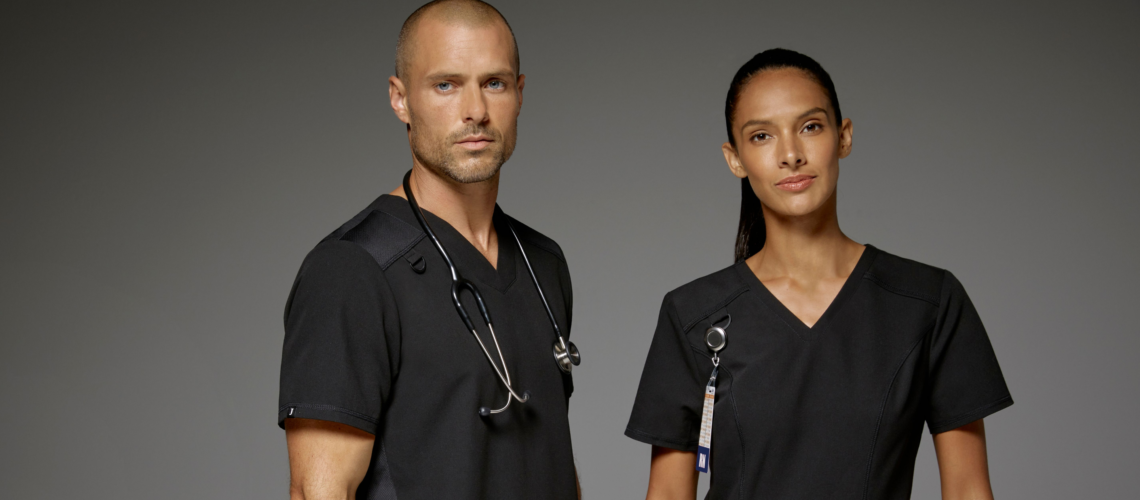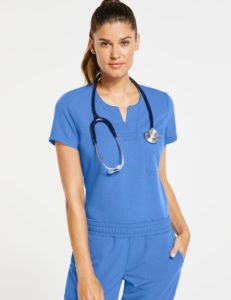Scrubs. The word instantly brings up synonymous ideas with healthcare professionals, operating rooms and dress codes. If you work in the healthcare industry, you obviously know why.
Even if you’re not a medical professional, you probably still know what medical scrubs are. Everyone’s been to the doctor at some point, and let’s face it, almost everyone has seen at least one episode of “Grey’s Anatomy.”
Basically, scrubs are a uniform designed to keep both the healthcare profession and their patients safe from germs and other bodily fluids.
What you may not know, however, is that scrubs are important for so many other reasons, too. And they have a fascinating history as well.
The purpose of medical scrubs
The primary purpose behind the excellent medical uniform that are scrubs is pretty obvious. Healthcare workers or not, we’ve all been medical patients at some point in our lives, and we’re inundated with mentions of nurses’ scrubs and other specialized equipment in high-stakes TV dramas.
Beyond the basics, however, you’ll find some genuine reasons why scrubs are so great as a uniform for medical staff working in healthcare facilities. These reasons have played a big part in why they’ve evolved to become a tool that’s essential to the trade.
Staying sanitary
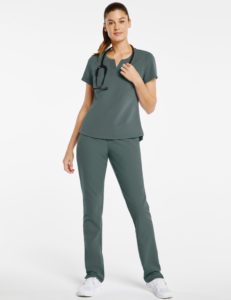
Simply put, medical scrubs are designed to keep healthcare workers, their patients and others in the immediate environment as safe as possible from pathogens and other biohazards.
In fact, if you try looking up what scrubs are made of, you’ll discover that the most modern uniforms have been specifically designed to be as sanitary as possible, like Jaanuu’s FUSEryx™ and SPINryx™ fabric blends. Both options are treated with an antimicrobial finish. Many scrubs are also designed to deal with excess moisture, with scrub tops and drawstring pants featuring moisture-wicking properties or breathable mesh-enhanced designs.
The reason for all these built-in safety features is that healthcare workers come into contact with countless contaminants, day in and day out. If you work in the industry, we needn’t go into further detail. Having a uniform that preemptively protects against those contaminants is crucial, especially if you need to clean your uniform regularly. This is just one of the benefits of wearing scrubs.
Easy identification
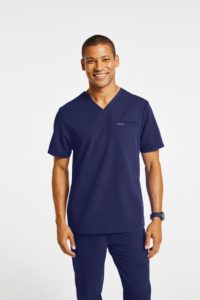
It goes without saying that if you see someone in a set of medical scrubs, you have a general idea of their profession. In a crowded hospital, for example, scrubs are a functional fashion statement that says, “This person is a healthcare worker.” With one quick sweep of the room, you can quickly (and safely) assume who’s staff and who’s a patient based on those wearing scrubs.
Scrubs can also be helpful for healthcare workers when they’re trying to identify each other as medical professionals. More specifically, in some cases, they help you distinguish different types of healthcare workers.
Certain facilities have specific rules about what type of colored scrubs their staff must wear. The different colors can denote a medical worker from a particular department or position, from doctors to nurses, occupational therapists and physical therapists, and even pharmacists. The same rule also applies to specialized medical clothing, like lab coats.
Va-va-value!

It’s no news to you: Working in healthcare involves a lot of dirty laundry. You know just as well as we do that medical professionals are constantly washing their uniforms in an ongoing effort to keep those scrubs free of contaminants.
Your scrubs put up with more than their fair share of wear and tear, needless to say. Still, the time eventually comes when you have to replace them. As such, you’ll want your scrubs to be as budget-friendly in the upfront cost, but as durable as possible, allowing them to last longer.
Our Jaanuu scrubs have been designed with the second option in mind, as all of our scrubs are wrinkle and fade resistant. After all, what are scrubs, if not another trade tool you use to keep yourself clean, comfortable and looking professional?
Another perk of wearing scrubs? Not only are they functional, but scrubs are also timeless. Unlike traditional office work attire—suits, skirts, shirts, ties and such—scrubs don’t go out of style every couple of years. That saves you from feeling pressured to revamp your wardrobe every time a new trend hits the runway, which also saves you money.
But that’s not to say we at Jaanuu don’t take fashion into consideration.
A more modern appearance
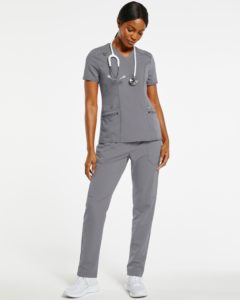
Of course, these days, we associate scrubs with medical professionals. But that wasn’t always the case. In fact, even when scrubs went into everyday use, they didn’t look the way they do now.
It’s no secret that the rigors of the healthcare industry can quickly leave your appearance looking frazzled. Modern scrubs take this into account. As such, most medical uniforms are purposely designed to be both functional, fashionable and professional at the same time.
Jaanuu takes a more holistic approach to med athleisure wear, too. We believe that a tailored uniform geared to your personal fashion preferences will help you feel more upbeat at work, whether you’re looking for a semi-fitted appearance or you opt to shop petite scrubs sizes for a specific inseam length.
When did nurses and doctors start wearing scrubs?
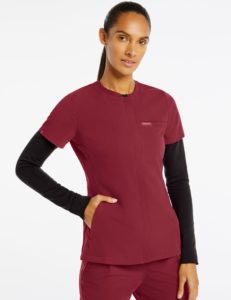
Scrubs didn’t always look the way they do now. In fact, there was a time when nurses and doctors didn’t wear scrubs at all.
Before the 20th century, scrubs simply weren’t a thing. That’s much in part because, not surprisingly, our knowledge of germs and how they operate was not as advanced as it is today.
Back then, surgeons wore “uniforms,” but they were essentially aprons intended to help keep them as clean as possible while performing operations, which most commonly took place in wide, open theatres with large audiences. Contaminants on the patient’s end did not factor into this equation.
Nurses’ uniforms, or rudimentary versions like the kind you see in historical dramas, were introduced in the early 1900s. But they still weren’t “scrubs” as we know them today. In the 1940s, further advancements were made in healthcare practices, and the need for sterile, closed operating rooms became more apparent. As part of this need for a sterilized room, surgeons began to wear sanitized gowns over their clothes. This was the beginning of surgical scrubs.
Slowly, the use of scrubs started to expand, from surgeons to other areas of healthcare. Scrub colors began to change too, from light to darker shades, to help with the eyestrain that comes from staring at a bright surface for too long.
Along the way, scrubs for nurses became standard. Over the past couple of decades, scrubs have also evolved to what we see now: form-fitting, functional, full of handy pockets to help with the job, and often coated with a unique antimicrobial finish. Above all, modern scrubs are what it says in the name: modern and professional. You can find many different examples of this aesthetic at Jaanuu!
If you’re looking for a new uniform to buy, we recommend browsing through our women’s scrub tops or men’s scrubs tops selection. You can also shop our full scrubs selection to see a better overview of all that we carry.

